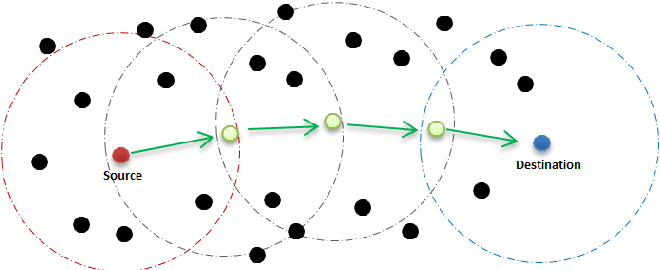
The geographical routing protocols are considered as the most stable and functional schemes for VANET’s large-scale areas compared to the topology-based routing protocols. The Greedy Perimeter Stateless Routing (GPSR) is a typical example of protocols based on geographical location, where each node uses the current information of its position, the position of its neighbors and that of the final destination to make the routing decision.
Considering three significant points:
- the interest that presents the location’s information and vehicles’ movement on the both vehicular networks and geographic protocols,
- the unemployment of amount information, namely, speed and direction given by GPS,
- the problems observed in geographic protocols as link breakage, it would be advantageous to exploit all these information together to estimate future positions and to consider them during decision process of routing protocols.
The authors of proposed the cross-layer weighted position-based routing (CLWPR) to improve the efficiency of geographical routing protocol in vehicular network. Thus, our new GPSR+PRedict routing protocol does not include direction and speed knowledge in the hello packet, but it includes the estimated future position calculated according to this knowledge.
In GPSR, before choosing the best path to route a data packet, each node in the network must know its neighbors and their positions. Nevertheless, without considering speed or moving direction while researching the best next hop, the GPSR protocol could lead to wrong packet forwarding decisions, which may cause packet loss.
The highlight is to improve routing mechanism by assisting GPSR protocol to make smarter routing decisions and to better choose the suitable neighbor as next hop while maintaining the basic search process of best next hop.
Article talks about “routing, protocol, packets, gpsr, node”
Auto193_n